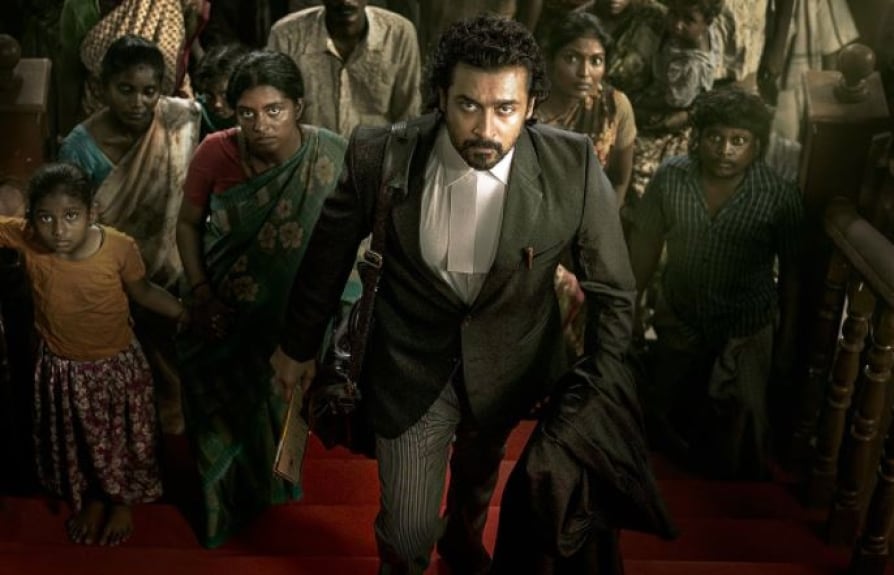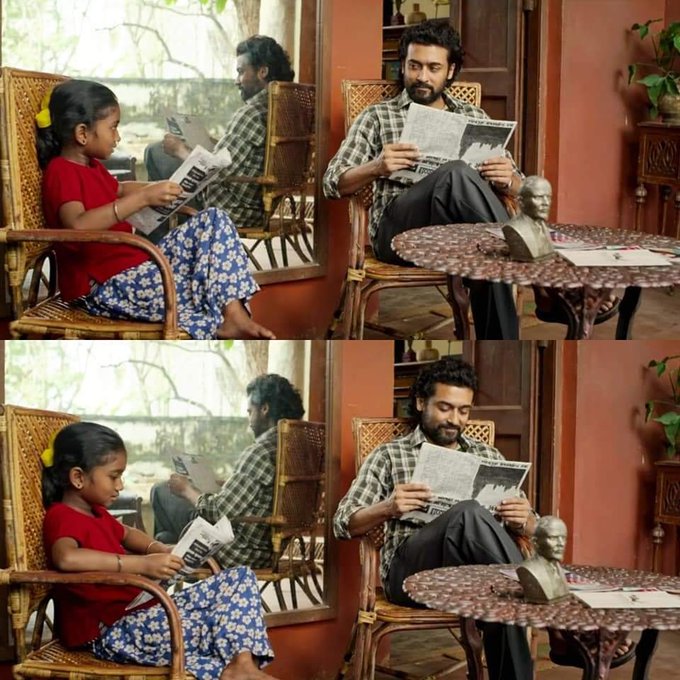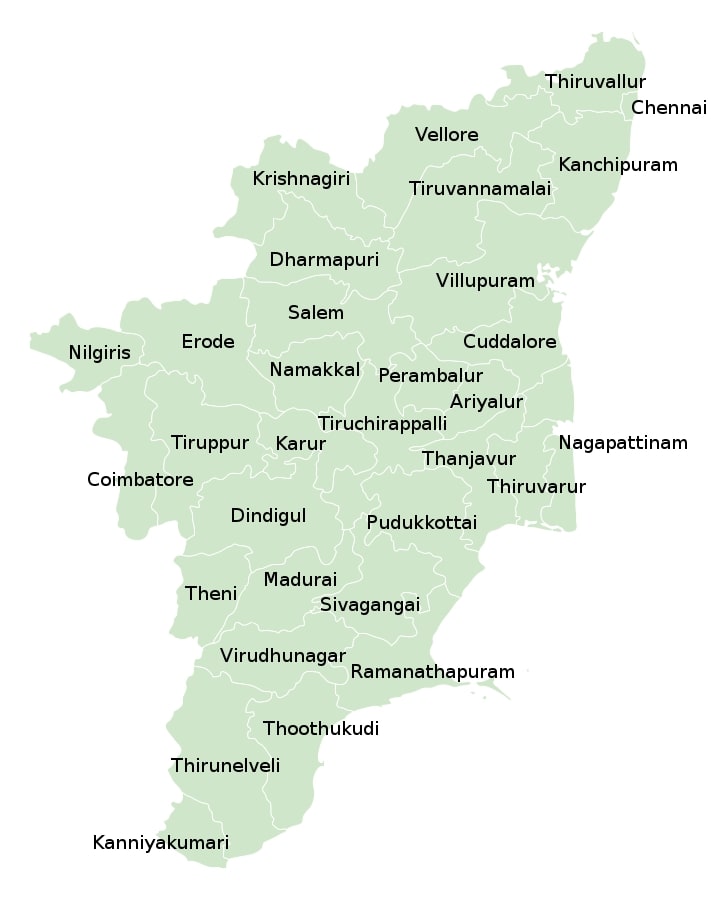
"??????? ???? ?????
????????????? ??????????
???? ???? ????!" - Bharatidasan.
Four years ago, the Everglades swamp in Florida was hounded by a specific variety of snakes not autochthonous to its land. Following repeated failures to curb the exploits of the reptiles, the authorities flew in a few men from a community known as Irulas, supposedly experts in snake-catching, from a remote part of South Asia to assist them. They worked wonders. The Western media rejoiced at the mysterious ability of these tribal men to track the trails of snakes. “The Irula are world-renowned for their snake-catching abilities,” the Washington Post declared.
Whilst the Irulars, a Tamil-speaking tribe who have historically inhabited parts of the Nilgiris, South and North Arcot districts, Chengalpattu and other areas, may have mastered nature, they have been cruelly subjugated by their fellow human beings. Their name derives from the Tamil word “irul” which means darkness. A British colonial official wrote of this clan in 1906 as follows, “The Irulas of South Arcot...talk a corrupt Tamil, are very dark skinned, have very curly hair, never shave their heads and never wear turbans or sandals.” “They are perhaps the poorest and most miserable community in the district,” concluded Edgar Thurston in 1909, a museum curator who studied medicine at King’s College London.
As times changed, the modes of oppression the Irulars faced, and continue to face, have adapted to newer circumstances. Only a couple of months ago, an Irular youth was set upon and urinated on by a gang of ruffians. His crime? Marrying a woman who belongs to a supposedly higher-caste. Another incident saw an Irular girl physically assaulted for applying to get a Scheduled Tribes (ST) certificate so she could avail of government benefits for her community in pursuit of her dream to become a medical doctor. “We have been facing discrimination from the vanniyar community members,” the girl’s father lamented.
The Movie:
The recently released film Jai Bhim attempted to depict honestly the tribulations the Irulars faced. The movie is based on true events that came to pass in the mid-1990s when an Irular man was arrested, brutalised and ultimately murdered in police custody for a theft that he did not commit. His death thrusts his wife, Parvathi, into a decades-long quest for justice during which she meets K. Chandru, a conscientious lawyer who resolves to fight her corner pro bono. Jai Bhim is a heartbreaking portrayal of the travails of oppressed communities in Tamil society and a scathing indictment of casteism that continues to pervade the Tamil social milieu.
In the very first scene, the police can be seen to insouciantly pick up Irulars walking out from a prison in order to charge them for another set of crimes they never committed. The ghastly quotidian implications of casteism are hammered home right from the get-go. The police also, at the same time, let go of others who are coming out of the prison because they belong to other, “superior” castes. As the film progresses, the viewer quails at the injustices and the iniquities that a community has been forced to endure. The bestiality of the police officers who savagely maul and sexually humiliate innocent men and women inspires indignation against the source of their impunity, the scourge of caste.

The protagonist in the movie, Suriya, who plays Lawyer Chandru, deserves substantial praise and approbation for taking up an issue that is sensitive but also neglected in public and popular discourse. Given the adulation he enjoys, his championing of the rights of the marginalised would leave a profound positive impact on the minds of his considerable number of acolytes. As one of the most popular and successful actors in the Tamil film firmament, Suriya has shone brightly in Jai Bhim. Furthermore, the promising young actors - Manikandan and Lijomol Jose - who essayed the role of the couple that were wronged by the police have also done a commendable job. A number of supporting actors, who include Irulars who suffered police brutality in their own lives, have made a remarkably good fist of communicating their plight albeit by virtually reliving their trauma. A combination of these merits have made Jai Bhim a success with mass audience and reviewers alike greeting the film with enthusiasm. However, not all quarters are happy with the movie.
The Controversy:
The Pattali Makkal Katchi (PMK), a party built by and for the Vanniyars, a caste concentrated largely in northern Tamil Nadu, has been offended by certain symbols used in Jai Bhim. The police officer who murders the Irular man in custody, has a calendar at his house which bears the image of a fire urn, emblem of the Vanniyar Sangam. That was the red rag to PMK. Anbumani Ramadoss, the party leader, wrote a letter to Suriya castigating him for misrepresenting the Vanniyars. In his statement, Ramadoss denigrated Suriya and the movie, without so much as acknowledging the service the film has done in shining light on the predicament of a historically disadvantaged Tamil community. The letter, reflecting a casteist mindset, suggested that Suriya make movies that “glorify” his own Gounder caste rather than cast aspersions on the Vanniyars.
Suriya came up with a conciliatory response and the fire urn emblem was promptly expunged. But the firestorm that Ramadoss set off enthused his cadres and one of them announced a reward of 100,000 rupees for the first Vanniyar who would kick Suriya. Another has vowed to torch a movie theater if Suriya doesn’t apologise for his misdeeds. In the space of a week, the political environment has been made fraught, opinions polarised, a towering personality besmirched and a revolutionary work of art vilified. The closest parallel one can think of is the controversy that the Bollywood movie Padmaavat engendered in 2018 when a similar reactionary outfit in North India threatened the filmmakers with retribution for a flimsy reason.

In order to grasp the backlash against Jai Bhim which the PMK spearheaded, it may be useful to remember some of the the party's previous political demands - its championing of the dismemberment of Tamil Nadu, for instance. The party’s leader, Ramadoss, Anbumani’s father, advocated the bifurcation of the state into two, supposedly for “administrative convenience.” However, it was transparently obvious that the real motive behind the demand was to take advantage of the numerical significance of the Vanniyar community in northern Tamil Nadu. Ramadoss himself admitted as much in an interview, saying that the idea is to get a separate state for the Vanniyars. No other party claiming to represent a specific caste in the Indian Union harbours such illusory and insidious aims.
Moreover, the PMK contested the 2021 Assembly Elections with the BJP (along with AIADMK), a party widely despised in Tamil Nadu for its Hindu nationalist agenda.The PMK joined forces with that party without the slightest discomfiture. These examples give one an indication as to the political priorities of the PMK, which seem to privilege caste over Tamil unity and the mission to push back against Hindutva forces. A furore whipped up by the PMK against a film like Jai Bhim, which otherwise has been widely welcomed, must therefore force us to question its real intentions behind polarising the political environment.
The Support:
One encouraging development so far has been, perhaps, the outpouring of support and solidarity with Suriya from across the spectrum. The Tamil Nadu and Puducherry Bar Council applauded Jai Bhim for its depiction of the importance of the legal profession. And directors like Vetri Maaran, Pa. Ranjith, Bharatiraja and many others have been expressing their support for Suriya. The hashtag #StandwithSuriya also trended across India following a spontaneous surge in pro-Suriya and pro-Jai Bhim sentiment. Tamil cinema needs more films like Jai Bhim that point to the grave implications of exalting the canker of caste. It also needs actors like Suriya and Dhanush who leverage their popularity to communicate important social messages through works like Jai Bhim and Asuran.
No one can be made to feel lesser for doing the right thing#Jaibheem. Suriya is one star who is redefining stardom. pic.twitter.com/BUdjw6v0g1
— Vetri Maaran (@VetriMaaran) November 16, 2021
Having said that, it should also be noted that Jai Bhim leaves something to be desired. For instance, the film could have also popularised Tamil anti-caste crusaders like Ayothidasa Pandithar and Rettamalai Srinivasan along with Ambedkar. Figures like Pandithar and Srinivasan faced acute oppression and attempted to rebel against it in the intellectual sphere. They hardly enjoyed the few benefits that British colonisation had to offer, such as a high-standard education, in contrast to Ambedkar who attended the London School of Economics (LSE) and Columbia University. But Tamil society is still deeply ignorant of people of their own ethnicity who fulminated against casteism during and even before the era of Ambedkar. A title like Jai Bhim, therefore, perpetuates the notion that the contributions of Tamils to the fight against casteism is insignificant or negligible. Moreover, the proclivity amongst Tamil directors to cast non-Tamil female actors in prominent roles and make them dub on their own even though their command of the language is less than satisfactory (instead of having someone fluent in Tamil dub for them) has been repeated in Jai Bhim.
Nonetheless, the merits of the movie far outweigh its downsides. It has held up a mirror to Tamil society that is still riven by parochial notions of caste. In the mission to remedy its deleterious effects, attempts made by fringe elements to belittle Jai Bhim must be overcome.
